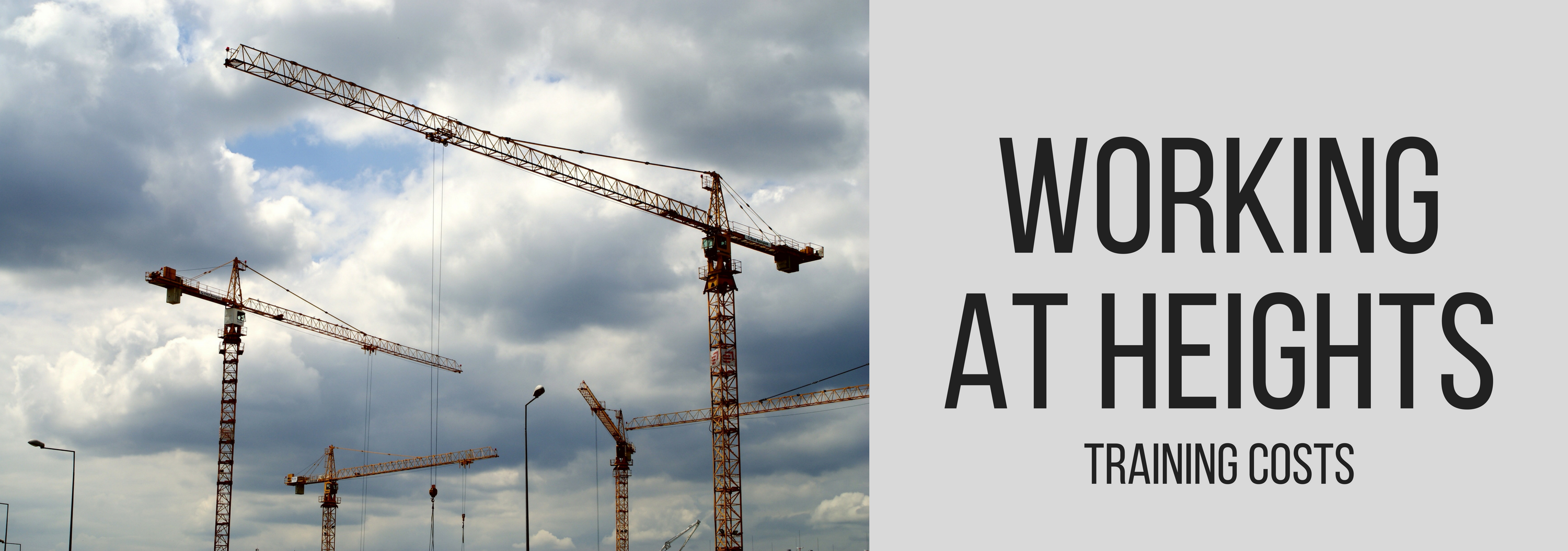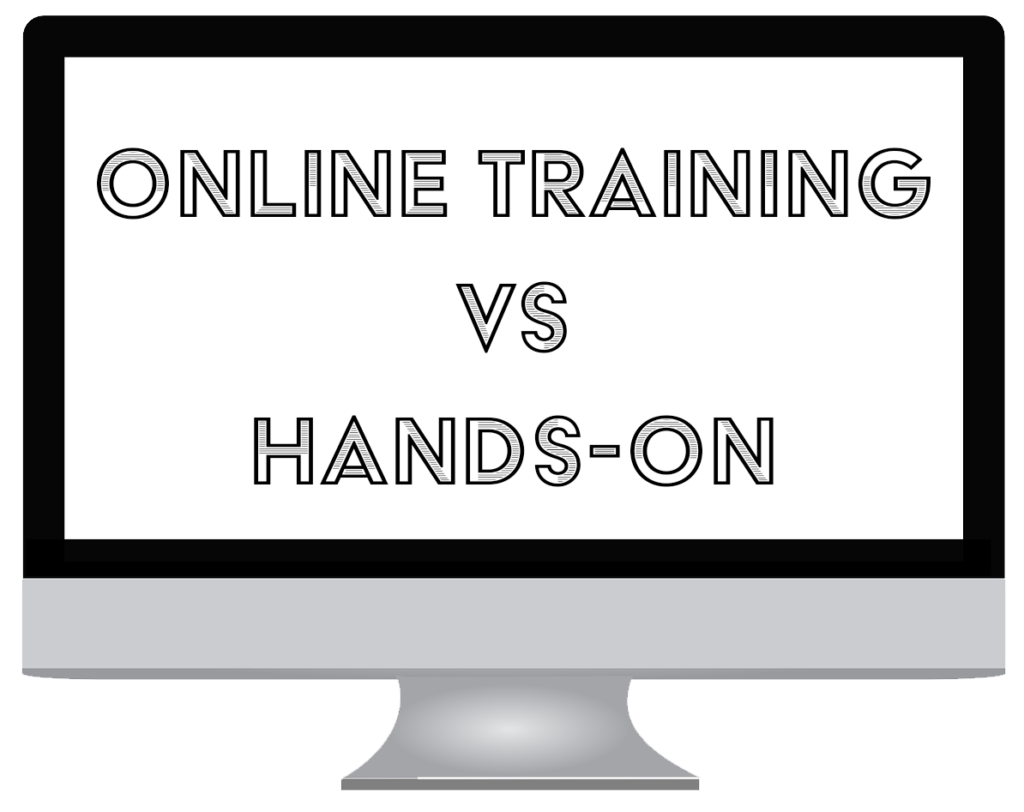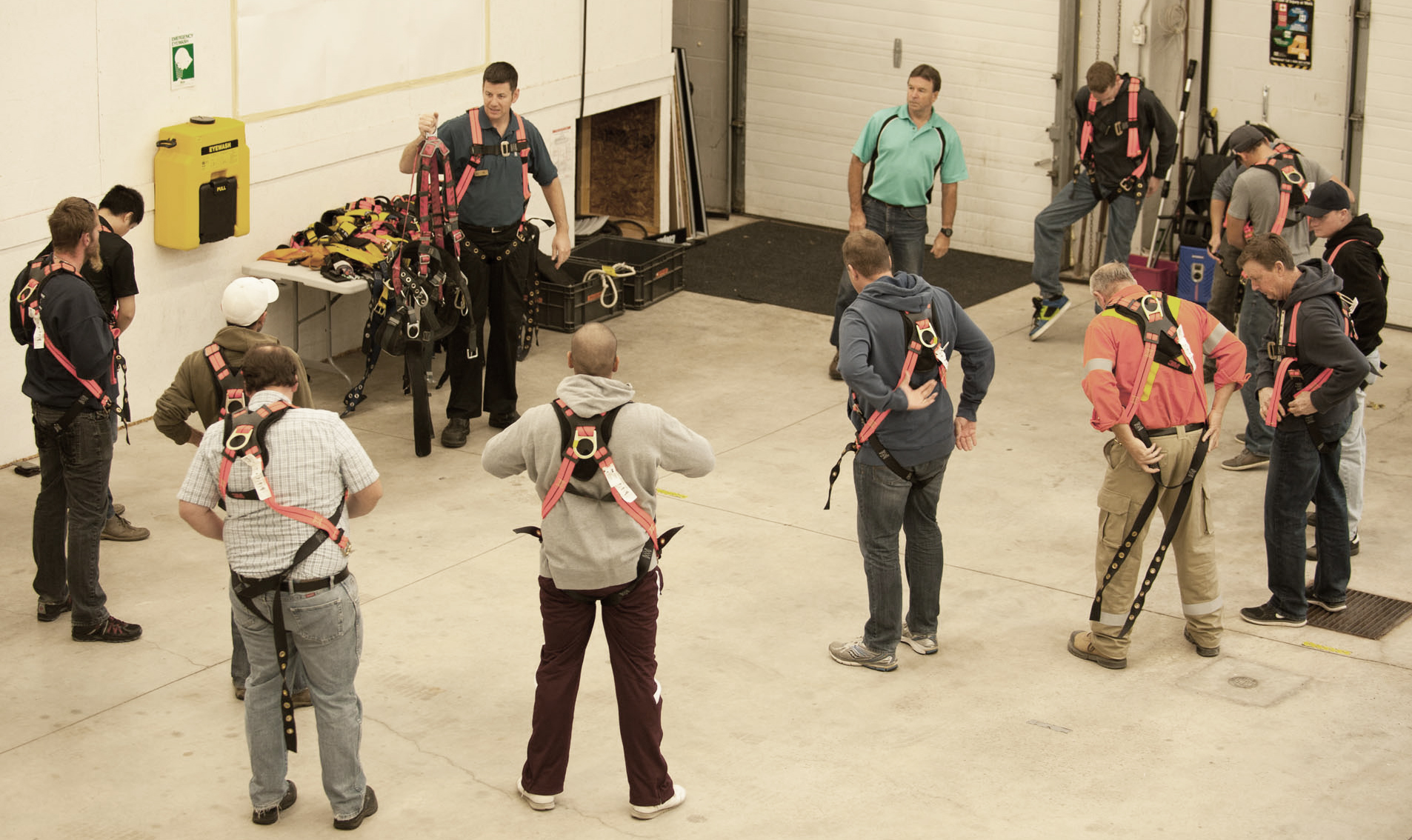Working At Heights Training Costs

Did you know that Working At Heights training is required by the Ministry of Labour, Immigration, Training and Skills Development for certain workers on construction projects? Employers must provide workers with a CPO-approved Working At Heights course before they begin work at heights. This article will help you determine if ACUTE’s WAH course is right for you by comparing Working At Heights training costs, course length, and course facts. Trust the experts at ACUTE to keep you and your employees safe in the workplace. Contact ACUTE today!
“Knowledgeable and professional trainers that understand the practical applications of the material they teach. They were able to give me confidence to go and use my training
– exactly what I wanted.”
– Joel – More testimonials here

The Hidden Cost of Inexperience

Working with experienced trainers is important for many reasons. When comparing the costs of different training companies, you should not make a choice based on price alone. Although the cheapest course may seem appealing, industry experience is extremely important and should be the first thing you look into when selecting your WAH training course and provider.
Courses delivered by inexperienced trainers can end up costing you much more as time goes on. Below you will read about online training versus hands-on training, and much of that information can be applied to inexperienced trainers versus industry experienced trainers.
Though the upfront costs may be less, the costs overall could end up being significantly more. Accidents, injuries, and the need to hire and train new workers can all be hidden costs of poor training. Falls are the number one cause of critical injuries and deaths of construction workers in Ontario (Source – Ontario.ca). According to the Ontario Construction sector plan 2017-2018, workers may be at increased risk of falling due to the following hazards:
- Missing protective devices such as guardrails
- Poorly maintained protective devices
- Poor lighting, slippery surfaces, and other poor housekeeping practices
- Lack of or misuse of personal protective equipment
- Improper training and other poor work practices such as rushing to meet deadlines, taking shortcuts, etc.
Improper training can be costly to both workers and employers. Did you know that Ontario companies spent $52M paying for work-related compensation and other losses on workplace fall injuries in 2015 alone? Working with experienced trainers and doing all your research ahead of time can help you and your workers stay safe and help save money in the long run.
Hands-On Versus Online Training – Couse Comparison

It may be tempting to take an online training course instead of a classroom course. The convenience of not having to leave your own home or office and the ease of setting up your computer and getting started seems like a great choice! However, can online training really provide the same quality as hands-on training with qualified professionals? Here are some facts about online training versus hands-on training.
- Online training does provide valuable information. However, online training has also been proven to provide lower quality of translatable work experience for those working at heights.
- Although in the short-term online training is cheaper and quicker, you must take into account all the accidents, injuries, and rehiring costs that occur when workers are not properly trained. In the long run, it’s better to spend a bit more and ensure your workers receive the highest quality training possible.
- Online training cannot tailor its information to your specific workplace – and that can cause problems! With classroom training, experienced and professional trainers are able to tailor information specific to your workplace and provide you with all the relevant information you need.
- Remember, for workplaces that require WAH training, you must receive training provided by a CPO-approved trainer. That means you cannot just take any online training course and assume it is equivalent to a course that has met legislative requirements.
Tips When Looking For a Working At Heights Trainer
Here are some quick tips and questions to keep in mind when looking for the right training provider for you and your employees.
- Is the course Chief Prevention Officer approved under the Working At Heights Training Program Standard? Workers cannot complete just any Working At Heights course; they must complete a Chief Prevention Officer approved WAH course.
- Has the WAH training provider been approved under the Working At Heights Training Provider Standard? Did you know that this approval is also a MLITSD requirement?
- How many workers can participate in the training provider’s WAH course at the same time? If you have a large corporation, it may be easier to provide training for all of your employees at the same time. However, if you have a smaller company, a training provider who focuses on small numbers and detailed classroom interactions may be the right choice for you.
- How much hands-on training does the course include? Theory is an important, required part of the WAH program, but hands-on training is extremely important for preparing workers for actual WAH hazards. Finding a course with an in-depth practical component is great for workers and employers alike.
ACUTE’s Working At Heights Training Course

ACUTE’s Working At Heights training course has four main objectives:
- To strengthen workplace safety culture by elevating the profile and importance of preventing falls from heights.
- To provide workers who may be exposed to the hazard of falling with adequate knowledge about fall hazards and general safety practices to work safely at heights.
- To provide workers who use personal fall protection equipment with sufficient knowledge about its purpose and use.
- To reduce the number of fall-from-heights incidents, injuries, and fatalities.
So, what do you get when you pay for ACUTE’s WAH course? Many Working At Heights courses in Ontario are relatively similar, as they have to follow the MLITSD standards in order to become an approved course. However, each and every course and training provider will have its differences and strengths. It’s important to look at all a training course has to offer and determine if it meets your specific needs and requirements.
When training with ACUTE, we can help accommodate busy schedules. You can also choose to train at our world-class health and safety training center, or train at your own facility!
Training With ACUTE: Infographic

When training with ACUTE, you will experience:

- A Working At Heights training program that has been approved by the Chief Prevention Officer (CPO) under the Ministry of Labour, Immigration, Training and Skills Development’s Working At Heights Training Program Standard and the Working At Heights Training Provider Standard.
- Training with highly skilled and competent instructors who have over 100 years of combined industry experience.
- A theory module that includes WAH legislation, WAH hazards, ladder safety, fall prevention strategies and systems, and more.
- A practical module that includes harness inspection and fitting exercise and evaluation, lanyard inspection exercise and evaluation, rescue plans, travel restraint, fall arrest set-up exercise and evaluation, A-B-C component selection, inspection, use, and more.
- Written evaluations and practical performance evaluations
Get Training With a Director-Approved Training Provider: ACUTE
ACUTE is dedicated to workplace safety and understands the importance of course and training provider approval. Why get Working At Heights training with ACUTE? Here are just some of the benefits of working with ACUTE.

- Open Door Instructor-Student Partnership – ACUTE’s training services emphasize client participation. Staff foster relationships with clients and serve as a touchstone for advice anytime moving forward.
- Serving Your Team and Industry – With a vast array of clients in manufacturing, construction, health, academic, and government sectors, ACUTE brings the best safety practices from across the spectrum to your workplace.
- 100 Years Combined Experience – ACUTE provides comprehensive health and safety training, on-site safety services, and consulting services. With over 100 years of combined experience, our company staff offer more than theoretical or abstract ideas. ACUTE offers solutions.
- Track Record of Success – ACUTE is rated 4.9/5 stars on Google reviews, demonstrating a commitment to our clients, quality, and passion for training.
Ready to sign up for ACUTE’s Working At Heights training course?
Click here to see what training courses we have at ACUTE or contact us today for quality training in your workplace or on-site at ACUTE’s proven training facilities!
ACUTE is located in Waterloo, Ontario, and services customers from cities such as Toronto, Mississauga, Brampton, Hamilton, Milton, Kitchener, London, Guelph, and others across Ontario.

